
by Alison Fraser | Apr 6, 2015 | Africa, Canada, Global Citizenship, Gratefulness, Humanitarian, Humanity, Inspirational, International, ONE, Philanthropy, Poverty, Social Good, Tanzania, Uncategorized, Women's Rights
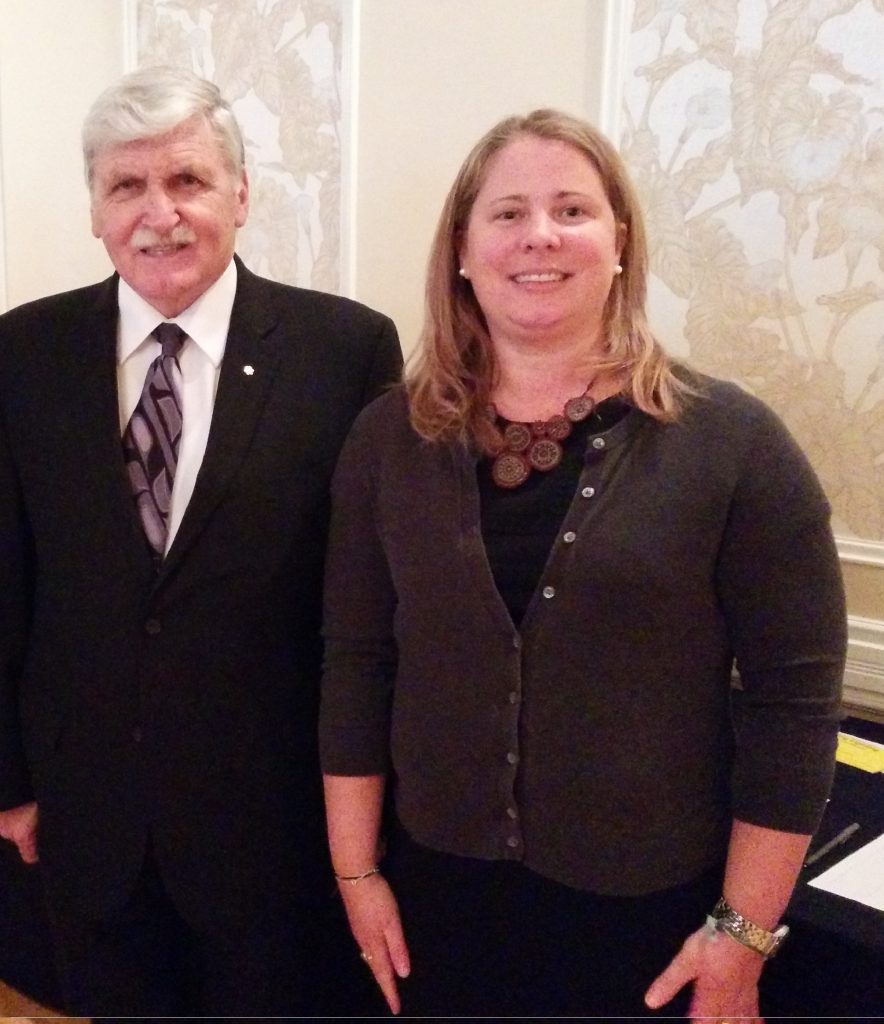
The author Alison Fraser pictured here with General Romeo Dallaire
I have written before on the trials and tribulations that go hand in hand with running a not for profit organization or charity. As we all know, negative words can have a huge impact on how we view ourselves and our work.
What I now realize, is that I have completely underestimated the power of kind words.
Let me explain…
Last month, I had the incredible opportunity to meet General Romeo Dallaire at a local charity event. General Dallaire is a highly respected Canadian general. He braved the Rwandan genocide of 1994, essentially remaining to help when most everyone else left Rwanda, and the world turned a blind eye to the extreme brutality taking place in the African country. As the guest of honour at the event, he spoke of the global injustices plaguing our world and causing, what he refers to, as global rage. We see this rage daily as the stories make headlines. According to General Dallaire, two of the main sources of this rage are our failures with respect to the: (1) empowerment of women and (2) education of children. I felt so uplifted to hear that the work we at Mom2Mom Africa are doing addresses two of the most important social injustices identified by someone as worldly and experienced as General Dallaire.
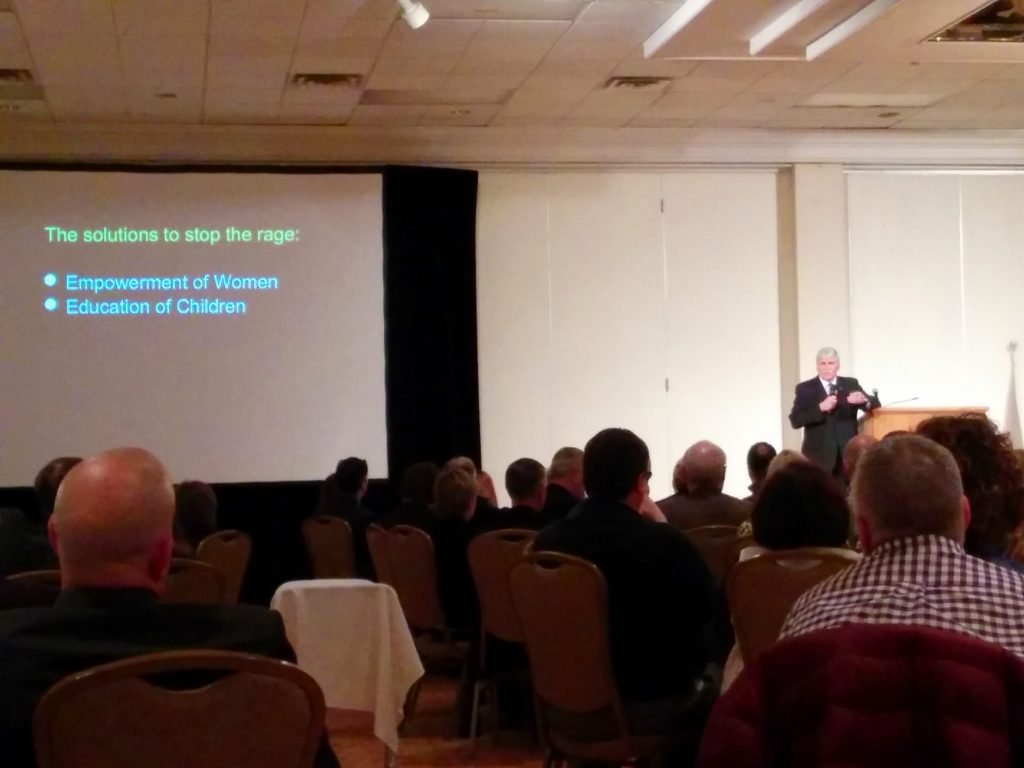
I raced to introduce myself to him after he spoke, and we chatted briefly about my work in Tanzania. I was so nervous but he put me right at ease. He was so humble and kind. And, at the end, he turned to me and said;
“young lady, keep doing what you are doing. It is the work of small, grassroots organizations like yours that will change the world”.
I could have cried right there on the spot; not out of sadness but instead out of pure joy. This man, who had inspired me in so many ways, just washed away all of my insecurities and doubts, with only a few words.
As the Buddha once said..
“Words have the power to both destroy and heal. When words are both true and kind, they can change our world”.
How great it is when someone, who is such an inspiration and role model, takes the time to encourage others, no matter how small their impact is on the world. Imagine what would happen if this was common practice? What if we built each other up instead of tearing each other down? What if we collaborated and focussed on common goals? Imagine what would be accomplished if we all spent more time being kind and supportive, especially those in positions of power. I am not sure if General Dallaire will ever know just how much his kind words meant to me. He gave me the strength to keep moving forward, to keep tackling and overcoming the obstacles that so many of us face. I will be forever grateful to this man, and I can only hope that others, who are in positions of influence, will follow General Dallaire’s lead. I am so proud of my fellow Canadian!
This is an original post written for World Moms Blog by Alison Fraser of Mom2Mom Africa
Do you remember kind words from another that may have inspired you in your life?
Alison Fraser is the mother of three young girls ranging in age from 5 to 9 years old. She lives with her family in Cambridge, Ontario, Canada. Alison works as an Environmental Toxicologist with a human environment consulting company and is an active member of the Society of Environmental Toxicology and Chemistry (SETAC). She is also the founder and director of the Canadian Not for Profit Organization, Mom2Mom Africa, which serves to fund the school fees of children and young women in rural Tanzania. Recently recognized and awarded a "Women of Waterloo Region" award, Alison is very involved in charitable events within her community including Christmas Toy and School Backpack Drives for the local foodbank.
More Posts - Website
Follow Me:



by World Moms Blog | Mar 20, 2015 | 2015, Awareness, Babies, Being Thankful, Caring, Communication, Eva Fannon, Family, Food, Girl Child, Girls, Gratefulness, Health, Humanity, International, Kids, Motherhood, Older Children, Parenting, Tinne, World Motherhood, Younger Children
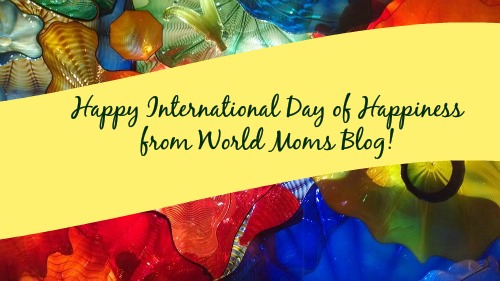 Today is International Day of Happiness! We at World Moms Blog know the importance of connecting with other people. In our technology driven societies, it becomes very easy to send a text message, an email, or to click “Like” on someone’s Facebook status…but does that actually make us feel like we made a personal connection with that person? Truly connecting is not as easy!
Today is International Day of Happiness! We at World Moms Blog know the importance of connecting with other people. In our technology driven societies, it becomes very easy to send a text message, an email, or to click “Like” on someone’s Facebook status…but does that actually make us feel like we made a personal connection with that person? Truly connecting is not as easy!
For International Day of Happiness this year, the theme is focusing on your connections with others. To help you think about conversation starters, or ways to connect with others on a more personal level, we asked our fabulous contributors this question: “What brings you happiness?” Read on to see some of their responses. (more…)
World Moms Blog is an award winning website which writes from over 30 countries on the topics of motherhood, culture, human rights and social good. Over 70 international contributors share their stories from around the globe, bonded by the common thread of motherhood and wanting a better world for their children.
World Moms Blog was listed by Forbes Woman as one of the "Best 100 Websites for Women 2012 & 2013" and also called a "must read" by the NY Times Motherlode in 2013. Our Senior Editor in India, Purnima Ramakrishnan, was awarded the BlogHer International Activist Award in 2013.
More Posts

by Dee Harlow (Laos) | Mar 18, 2015 | Africa, AIDS, Health, International, Maternal Health, Motherhood, World Moms Blog, World Motherhood
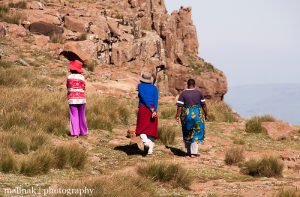 Now that our family has settled in nicely to life in Maseru, the capital city of Lesotho, I can turn outwards to learn more about the country and its people.
Now that our family has settled in nicely to life in Maseru, the capital city of Lesotho, I can turn outwards to learn more about the country and its people.
The first thing that I had to learn to keep straight was how to call the people and their language:
- the country is Lesotho
- the people are Basotho
- the language is Sesotho
So, the Basotho live in Lesotho and speak Sesotho. Clear?
Of course, as a mother, I’ve been looking closely at the world of mothers here. I’m curious about our similarities, differences, and challenges.
The Sesotho designation to all adult married women is “‘M’e,” which means ‘mother’. I miss being called “Madame” as was the case in Laos, but I quickly grew accustomed to “‘M’e.” (Except when adult men would translate it into English and call me “Mommy” in their deep baritone voices, which at first sounded creepy.) I have had to remember that it is a sign of showing respect to call me “Mommy”, and doubly so because they are going through the trouble of translating it into my language.
Indeed, “the mother” appears to be a very well-respected position in the Basotho household and society. At least outwardly. The women walk tall and proud, and are commanding in speech. This elicits a certain degree of deference and respect–at least from me anyway! The women here are definitely not of the American custom of making you their BFF with reassuring agreements, nods, and smiles, and setting the next date for coffee and friending you on Facebook right away. It is more of a distant and courteous “I like you”, and reminds me of first meeting northern Europeans, the layers peeling away into jokes and smiles the more you meet and truly get to know one another.
Despite the outward display of respect for ‘M’e, however, are some staggering statistics for the health status of women in Lesotho. According to a gender-based violence (GBV) prevalence survey conducted in 2013, 86% of women have experienced GBV in their lifetime. This figured is viewed as a gross underestimation since the survey revealed that only 2-3% of respondents reported the violence, and only 1% of those raped by non-partners ever reported the rape to the police or health care workers.
Another astounding statistic is HIV prevalence among women in the country. Adult HIV prevalence is estimated at 23.6% (the second highest in the world), according to a 2009 United Nations study. Moreover, women are more likely to be HIV+ than men (27% vs. 18% respectively). And due to maternal transmission of HIV, approximately 15,000 HIV+ women deliver children each year, with 40% of these children becoming infected.
Some might say that the social and economic roots to both of these issues for women in Lesotho are due to the poor state of the Lesotho economy, where 57% of the population live below the poverty line and 25% are unemployed. This has led to worker migration seeking job opportunities in surrounding countries, areas also experiencing high HIV rates. Out of a total population of barely 2 million people, 25% are estimated to work in South Africa’s formal and informal sectors. This has implications for cross-border HIV transmission through risky sexual behavior by migrants, as well as by partners left at home in two of the highest HIV prevalent countries in the world.
Perhaps it is the very personal and private issues of violence and HIV that explain what I’ve observed here as very close female bonds. At social gatherings, the women and men tend to self-segregate. Not due to any religious beliefs (the Basotho are predominantly Christian), or traditional practices. Rather, it appears to me that a circle of women is where they find trust, openness and support for what they all experience and fear. From what I can see, it is a very close bond that is essential to every woman here. To be let in will take more than hosting coffee and being Facebook friends. In the meantime, I stand with them in the spirit of womanhood and motherhood, from afar for now.
Do women in your country/culture have exceptionally strong social bonds? What do you think it is attributed to?
This is an original post to World Moms Blog by our mother of twins writer, Dee Harlow, currently living in Lesotho. You can also find her on her blog Wanderlustress.
Photo credit, with permission, attributed to Malinak Photography, all rights reserved. This photo has a creative commons noncommercial share alike license.
Sources:
CIA World Factbook
Wilson, FHI, USAID, IMPACT, Lesotho and Swaziland: HIV/AIDS assessments at cross-border and migrant sites in Southern Africa, 2002
Joint United Nations Programme on HIV/AIDS, Together We Will End AIDS, 2012
The Ministry of Gender Youth Sports and Recreation, Lesotho Bureau of Statistics and Gender Links, Findings of the Lesotho Violence Against Women Baseline Study, 2014
UNICEF, Lesotho National Strategic Plan for Elimination, 2011
The World Bank Data
One of Dee’s earliest memories was flying on a trans-Pacific flight from her birthplace in Bangkok, Thailand, to the United States when she was six years old. Ever since then, it has always felt natural for her to criss-cross the globe. So after growing up in the northeast of the US, her life, her work and her curiosity have taken her to over 32 countries. And it was in the 30th country while serving in the Peace Corps in Uzbekistan that she met her husband. Together they embarked on a career in international humanitarian aid working in refugee camps in Darfur, Sudan, and the tsunami torn coast of Aceh, Indonesia.
Dee is now a full-time mother of three-year old twins and continues to criss-cross the globe every two years with her husband who is in the US Foreign Service. They currently live in Vientiane, Laos, and are loving it! You can read about their adventures at Wanderlustress.
More Posts

by Tina Marie Ernspiker | Feb 27, 2015 | 2015, Expat Life, Family, International, Kids, Life Lesson, Living Abroad, Mexico, Motherhood, Nature, Parenting, Vacationing, World Motherhood, Younger Children
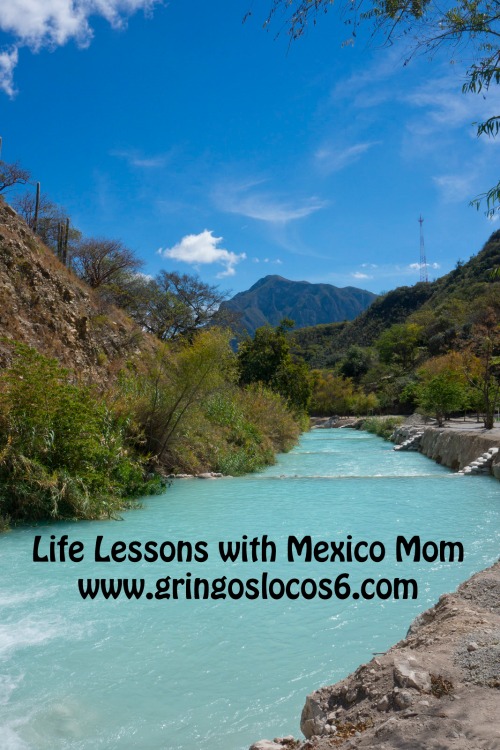
As a wife of one and a mom of four, it seems like I am always learning and discovering! I know I am not alone. Let’s just admit it: The world is a big place, life is a lesson, and children can be the best teachers. Normally my series, Life Lessons with Mexico Mom, is hosted on Los Gringos Locos, but today I am posting here on World Moms Blog.
This week’s life lessons are all about camping in the Mexico mountains. A few weeks ago we took the kids to Grutas Tolantongo. This place is amazing! It is a hot spring park located in the southeast mountains of Mexico. The hot spring water flows out of a waterfall, into a cave, down a series of rapids, and finally through the valley in a hot water river. How awesome does that sound? Here are my insights and experiences as a Mexico Mom, camping near a hot water river:
Life Lesson 56: Don’t leave the baby’s travel crib at home. Brad said we didn’t have room for it in our tent. I thought leaving it was a bad idea but I decided to go with the flow. This was a terrible mistake. Tristan was totally out of his element. He must have cried and screamed for two hours before falling asleep. We were afraid the campground was going to kick us out. Finally I put him in his stroller, which he hated even more then being free range in a small tent. When I got him out of the stroller to change his diaper, he was so exhausted from kicking and yelling that he fell asleep beside me and slept all night. From now on the crib goes with us even if Brad has to sleep outside for lack of tent space 😉
Life Lesson 57: Don’t trust a nine year old near rapids. The river is shallow and divided into pools by large stones that create small rapids. I told Taylor and Alexis to stay in a specific pool and not to go over the rapids into another pool. I was afraid they would fall on the slippy rocks. Sure enough, Taylor decides to stand up on a large stone and make funny faces while wiggling her bum at her sister. She slipped and went through the rapids. Next thing I know, her goggles are floating down the river and she is crying at the top of her lungs. After getting Taylor out of the water, I saw she had scraped her back along the rocks. She had small cuts and bruises down the length of her spine. My poor kid was a little traumatized, but after learning the hard way, she stayed away from the rapids.
Life Lesson 58: Don’t try taking the stroller on a hiking trail. Yes, we are that nutty. I guess we thought that the trail was a very short distance, with flat terrain. Nope. After walking a mile up a mountain, over steps, rocks, and tree roots, traveling through forest complete with banana trees, under a zip line, and over a few creeks, we finally made it to the other half of Grutas Tolantongo. It was worth the effort but thankfully we were able to take the shuttle back to our campsite. Oh yeah, they had a shuttle the whole time. At least we exercised for the week and saw some of the most beautiful mountain scenery in Hidalgo, Mexico.
What life lessons did you learn this past week? Please share it with us below. We want to hear your thoughts from around the world!
This is an original post to World Moms Blog by Tina Marie Ernspiker. Tina can be found blogging over at Los Gringos Locos. She is also on Facebook and Twitter.
Photo credit to the author.

by Kyla P'an (Portugal) | Feb 19, 2015 | 2015, Awareness, Being Thankful, Celebrations, Childhood, China, Culture, Education, Eye on Culture, Family, Husband, International, Kids, Life, Life Lesson, Marriage, Motherhood, Multicultural, Parenting, Relationships, Traditions, USA, World Events, World Motherhood, Younger Children
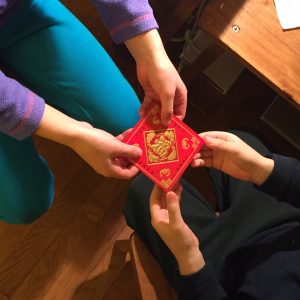 Solar year, 2015—celebrated in most of the Western world— is small potatoes compared to its lunar counterpart starting today: The Year of the Goat, 4713.
Solar year, 2015—celebrated in most of the Western world— is small potatoes compared to its lunar counterpart starting today: The Year of the Goat, 4713.
Today, in many countries across Asia, people are celebrating Chinese New Year [CNY]. It marks the first day of the lunar year, which begins with the second new moon after the Winter Solstice.
CNY is the most important holiday for Chinese people world-wide and is celebrated in countries with significant Chinese populations (Hong Kong, Macau, Singapore, Taiwan, Indonesia, Philippines, Thailand, Malaysia and Mauritius).
Even right here in America, in ways both big and small, Chinese families are celebrating the Year of the Goat too.
My husband, a first generation Chinese-American, brought his Chinese culture into our home and together we have established our own family traditions.
Both our 8 and 5 year old children attend Chinese Language School so our celebrations typically begin there. This year, each of our kids performed in a class skit—one doing a New Year’s song and the other both a song and dance.
Their Chinese school rents out a local auditorium and the celebration goes on for four hours, complete with traditional paper decorations, red lanterns and Chinese snacks of spring rolls, scallion pancakes and fortune cookies (the latter of which I’m pretty sure is a wholly American invention).
And though the four-hour Chinese school celebration feels long and drawn out, it’s nothing compared to the 15-day celebration going on over in Asia.
We live just outside of Boston, a city boasting a large Chinatown. If we’re really motivated, we can fight the crowds and view Lion Dancers, firecrackers in the street and dine on authentic Chinese fare surrounded by thousands of people.
This year, however, our city is buried under record amounts of snow (96.7in/2.5m) so we won’t be making any such pilgrimage.
Sometimes we have friends over and make homemade wontons, a symbolic food representing a pouch of coins, or Hot Pot. Other years we just make sure we eat some kind of Chinese food (either at home or in a restaurant).
We also make sure we always give our kids Hong Bao, little, red envelopes filled with “lucky” money. Since our kids don’t get an allowance, this feels special to them. We never give them very much because it’s the gesture that counts but if they happen to be lucky enough to visit their great-grandmother around Chinese New Year, they might get upwards of $50.
I know these little traditions are modest compared to mainland China but we hope that in our small way we are instilling in our children a some sense of the deep culture they are part of.
恭禧發財
Gong Xi Fa Cai!
How do you hold on to your cultural heritage? What are some traditions you’ve incorporated into your own family?
This is an original post to World Moms Blog from our managing editor and mother of two in Boston, Massachusetts, Kyla P’an.
The image used in this post was taken by the author.
Kyla was born in suburban Philadelphia but spent most of her time growing up in New England. She took her first big, solo-trip at age 14, when she traveled to visit a friend on a small Greek island. Since then, travels have included: three months on the European rails, three years studying and working in Japan, and nine months taking the slow route back from Japan to the US when she was done. In addition to her work as Managing Editor of World Moms Network, Kyla is a freelance writer, copy editor, recovering triathlete and occasional blogger. Until recently, she and her husband resided outside of Boston, Massachusetts, where they were raising two spunky kids, two frisky cats, a snail, a fish and a snake. They now live outside of Lisbon, Portugal with two spunky teens and three frisky cats. You can read more about Kyla’s outlook on the world and parenting on her personal blogs, Growing Muses And Muses Where We Go
More Posts - Website
Follow Me:


by Kyla P'an (Portugal) | Feb 8, 2015 | 2015, Education, International, Parenting, USA, World Voice
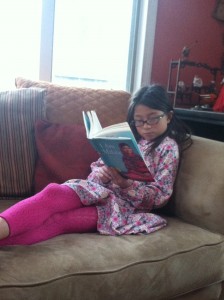 I have long been an advocate of girls education. It is something I want every girl, wherever she is in the world, to have access to. I deeply believe educating girls is a major proponent in our quest to improve the world.
I have long been an advocate of girls education. It is something I want every girl, wherever she is in the world, to have access to. I deeply believe educating girls is a major proponent in our quest to improve the world.
So when my daughter was born eight years ago, I committed myself to ensuring that she would always have the access to and support she needs in attaining the best education my husband and I can give her.
But along with the paramount importance her education is to me, so too is her understanding of how valuable having an education is and how lucky she is to have safe schools and multiple options available to her.
But how do you impart this to an eight-year-old?
Like the majority of other eight-year-olds in the US, my daughter takes it for granted that she attends school five-days-a-week, Monday through Friday. But she also attends school on Sunday, when she goes to Chinese School. And this she does not take for granted, instead she long viewed it as a hindrance to her free-time. Because, though she only spends 90-minutes a week at Chinese school, its homework load and test schedule far exceed that of her American school, where she spends more than 30-hours-a-week.
Whenever my daughter complains about the work load or Chinese school conflicting with social events, I find myself saying:
You have NO idea how lucky you are to have more than one school to attend.
But until recently, this was a phrase delivered with little impact. That is, until my daughter started reading her latest book: I Am Malala, by Malala Yousafzai.
She received the book for Christmas, along with A Long Walk to Water, from her aunt. When she opened the gift, I was thrilled because, though I love Harry Potter and Percy Jackson, here were some stories that really mattered; finally, some glimpses into a REAL world, just one my child did not yet know.
I hoped, desperately, that she’d want to read these stories.
I was in luck.
Almost as soon as she picked up I Am Malala, she had trouble putting it down. It was filled with concepts she had trouble getting her head around: like the idea that a person could board Malala’s “school bus” with the intent to kill her or that having access to school was a privilege.
It had her asking all kinds of questions: about hardships and hurdles girls in other parts of the world have to face in order to get an education; about what it means to be a top student; about what sorts of sacrifices students (and their families) have to make in pursuit of education.
Reading Malala’s story is opening my daughter’s eyes to the opportunities and freedoms she takes for granted and it is giving her a deeper gratitude for what she has.
I don’t want my young children to worry about the injustices and evil out in the world but I do want them to understand better the many blessings they have and that not everyone has the same access to these opportunities.
Tomorrow, here in the US, our Public Broadcasting Service (PBS) will air the third and final episode of #APathAppears. In January, when World Moms Blog Founder, Jennifer Burden, World Voice Editor, Elizabeth Atalay and I attended the pre-screening of this series in New York, by invitation of @SaveTheChildren, it was episode 3 that resonated most with me.
The episode highlights Kibera, the largest slum in Kenya. But rather than showing us the desperate side of life in the slum, viewers (and readers of the eponymous book before) are introduced to Kennedy Odede and his wife Jessica and the organization they have built, Shining Hope for Communities(SHOFCO).
Like me, and so many others, SHOFCO knows that the pathway to hope is guided by educating girls. Authors Nicholas Kristoff and Sheryl WuDunn remind us that, if enough people walk in the direction of hope, ultimately A Path Appears.
You can watch the PBS series, A Path Appears online, by clicking here. Or read the book of the same title by husband and wife journalists @NickKristoff and Sheryl @WuDunn.
This is an original post to World Moms Blog by Sr. Editor and mother of two in Massachusetts, USA, Kyla P’an.
The image used in this post is credited to the author.
Kyla was born in suburban Philadelphia but spent most of her time growing up in New England. She took her first big, solo-trip at age 14, when she traveled to visit a friend on a small Greek island. Since then, travels have included: three months on the European rails, three years studying and working in Japan, and nine months taking the slow route back from Japan to the US when she was done. In addition to her work as Managing Editor of World Moms Network, Kyla is a freelance writer, copy editor, recovering triathlete and occasional blogger. Until recently, she and her husband resided outside of Boston, Massachusetts, where they were raising two spunky kids, two frisky cats, a snail, a fish and a snake. They now live outside of Lisbon, Portugal with two spunky teens and three frisky cats. You can read more about Kyla’s outlook on the world and parenting on her personal blogs, Growing Muses And Muses Where We Go
More Posts - Website
Follow Me:








 Today is
Today is 
















